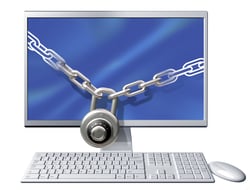 By now, it’s not a well-kept secret that IT security is an important consideration in the design and operation of an organization’s network. A lot of things can be centrally managed by your IT administrator, like maintaining current anti-virus software, delivering timely operating system security updates, and web content filtering.
By now, it’s not a well-kept secret that IT security is an important consideration in the design and operation of an organization’s network. A lot of things can be centrally managed by your IT administrator, like maintaining current anti-virus software, delivering timely operating system security updates, and web content filtering.
Keeping someone from your workstation is another consideration, but one over which IT administrators have limited control. Sure, screen time-outs can be set, but they can be onerous to deal with, especially if you’re having to unlock your screen every time you turn away to look something up in a good, old-fashioned paper file on the other side of your desk.
"Then, why," you might ask, "do I need to be concerned with locking my laptop in the office? No one’s in the office who shouldn’t be."
Maybe not, but I’m sure you get visitors from time to time. Wandering eyes are not outside the realm of possibilities either. Additionally, much like the permissions set on the file shares on your organization’s servers (where only you have permission to see what is needed to accomplish your job), there’s no reason to make it any easier for information to get into the wrong eyes or hands, even if they’re a part of your organization. Moreover, with so much work being done out of the office in public places like your favorite coffee shop, it’s good practice to be in the habit of locking your computer when you’re not sitting right in front of it.
As you’ve heard us say before, laptops are relatively easy to replace. Information breaches, depending on the scope and magnitude, can be very expensive.
Locking your workstation to prevent any unauthorized use is the responsibility of those with an active account on the network. So get into the habit of locking your computer when you step away from it. It's better to be safe than sorry.





